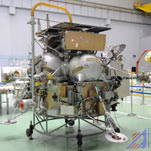If solar energy is eventually going to matter — that is, generate a significant portion of the nation’s electricity — the industry must overcome a major stumbling block, experts say: finding a way to store it for use when the sun isn’t shining.
Storehouses for Solar Energy Can Step In When the Sun Goes Down

A completed solar power tower at the SolarReserve Crescent Dunes Solar Energy Plant, Tonopah, Nev., expected to be in service in 2013.
By MATTHEW L. WALD
Published: January 2, 2012
Related
-
Green Blog: The Convoluted Economics of Storing Energy (January 3, 2012)
SolarReserve
An artist's rendering of the SolarReserve plant, which will absorb heat directed at it by mirrors and store it in molten salt.
That challenge seems to be creating an opening for a different form of power, solar thermal, which makes electricity by using the sun’s heat to boil water. The water can be used to heat salt that stores the energy until later, when the sun dips and households power up their appliances and air-conditioning at peak demand hours in the summer.
Two California companies are planning to deploy the storage technology: SolarReserve, which is building a plant in the Nevada desert scheduled to start up next year, and BrightSource, which plans three plants in California that would begin operating in 2016 and 2017. Together, the four projects will be capable of powering tens of thousand of households throughout a summer evening.
Whether the technology will be widely adopted remains to be seen, but companies like Google, Chevron and Good Energies are investing in it, and the utilities NV Energy and Southern California Edison have signed long-term contracts to buy power from these radically different new power plants.
One crucial role of the plants will be complementing solar panels, which produce electricity directly from sunlight. When the panels ramp down at dusk or on cloudy days, the plants will crank up, drawing on the stored thermal energy.
That job will become more important if photovoltaic panels, which have plunged in price lately, become even cheaper and sprout on millions of rooftops. As the grid starts depending more heavily on solar panels or wind turbines, it will need other energy sources that can step in quickly to balance the system — preferably ones classified as renewable.
Most utilities are trying to generate as many kilowatt-hours of renewable energy as they can to meet stiffer state requirements on incorporating more alternative energy, said Kevin B. Smith, the chief executive of SolarReserve.
“As we move forward, we’ll get more and more traction with the fact we can provide more capacity,” Mr. Smith said, referring to his company’s storage technology.
The Energy Department seems to agree: in September it gave SolarReserve a $737 million loan guarantee for its project in Nevada. The plant will generate 110 megawatts at peak and store enough heat to run for eight to 10 hours when the sun is not shining.
The public’s view on loan guarantees for solar projects has soured somewhat since the bankruptcy of Solyndra, a California company that received a $535 million loan guarantee to build a factory to make solar panels — only to see the market for the modules crash.
But the outlook has always been clearer for companies that make electricity, which, unlike solar modules, is generally presold by contract.
Technical details of the SolarReserve and BrightSource plants vary slightly, but both will use thousands of computer-operated poster-size mirrors aiming sunlight at a tower that absorbs it as heat.
SolarReserve absorbs the heat in molten salt, which can be used immediately to boil water, generating steam that turns a conventional turbine and generator. Hot salt can also be used to retain the heat for many hours for later use. BrightSource heats water that can be used immediately as steam or to heat salt for storage.
The plants rely on salt because it can store far more heat than water can. But once molten, it must be kept that way or it will freeze to a solid in part of the plant where it will be difficult to melt again. “You’ve made a commitment to those salt molecules,” said John Woolard, the chief executive of BrightSource.
The technology is not complicated, but the economics are.
The simplest, least expensive path for solar thermal is to turn the heat into electricity immediately. But the companies are a bit like the farmer who harvests the grain and stores it in a silo rather than shipping it straight to market on the expectation that prices will be higher later. They are betting that in revenue terms, the hour at which the energy is delivered will be more important than the amount generated.
The notion is that widespread adoption of solar panels — whether on rooftops or in giant arrays in the desert — will change the hours at which prices are highest.
Today, electricity prices usually peak in the late afternoon and evening on hot summer days. “Photovoltaic panels will do a pretty good job of chopping that peak” in the late afternoon, said Paul Denholm, a solar specialist at the National Renewable Energy Laboratory in Golden, Colo.
In other words, the new price peak will be pushed to later in the day, to just before and after sunset, when solar photovoltaic production is small or nonexistent, he and other experts say.
- 1
- 2
This article has been revised to reflect the following correction:
Correction: January 5, 2012
An earlier version of this article misidentified the Colorado city where the National Renewable Energy Laboratory maintains offices as Boulder, rather than Golden.
This article has been revised to reflect the following correction:
Correction: January 6, 2012
An article on Tuesday about technology to store the output of solar power plants misstated, in some copies, the given name of the chief executive of BrightSource, which plans to deploy the technology in some solar plants in California. He is John Woolard, not Paul.














